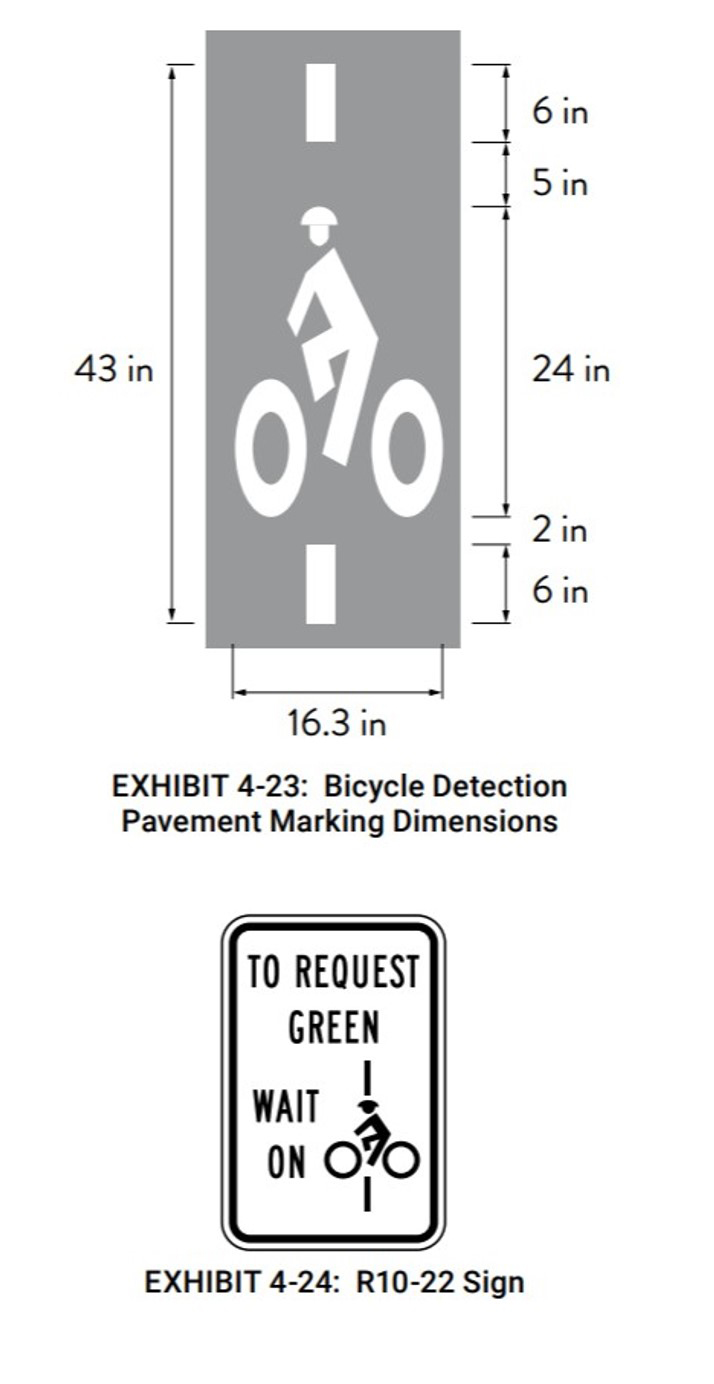Bicycle detection at signalized intersections
Search Content
Download PDF
Print Guide
Introduction
Employing passive bicycle detection at actuated traffic signals is an important component of a safe and comfortable bicycle network and supports bicycling as a practical means of transportation.
Figure 3.7E.14:
Bicycle detection at signalized intersections
Design Considerations
|
Actuated Signals |
At actuated signals, passive detection is preferred whenever possible. |
|
APS |
Where accessible pedestrian signal push buttons are required, passive detection can still be implemented. |
|
Detection Location |
Passive detection should be located across the entire bicycle path, in any two-stage turn box or bike box, and adjacent to a curb (or other footrest) whenever possible. |
|
Pavement Markings |
When using inductive loop detection, the bicycle detector pavement marking can be used to identify the best place for a bicyclists to position their bike for detection, and can be supplemented with a Bicycle Signal Actuation sign (R10-22). See Figure 3.7E.13 for more details. |



